The Vie Cave and the telluric energy
Places High Energy
The site is by definition “a portion of space delimited materially or ideally”. From time immemorial, the basic needs of human beings have remained unchanged: to find the physical and spiritual nourishment. E ‘need to respond to this primordial man over the millennia, has interpreted physically but also ideally places special geophysical characteristics and energy.
Few know them, almost no one has seen them.
What are they?
The Vie Cave.
The charming streets carved into the rock more ‘than 5000 years ago’, what it is, all filtered by a personal knowledge of the places by the writer. Curiosity born after reading that they retain a magical telluric energy clearly perceptible.
What are they?
They are called Vie Cave those tortuous paths semisotterranei distances ranging from a few tens to hundreds of meters, crossing, engraving deeply for tens of meters, the tuffaceous rocks of the hills of the Fiora River, the southernmost area of Tuscany.
In particular, characterize the area of:
Pitigliano: (Via Cava di San Lorenzo, Via Cava del Gradone, Via Cava della Madonna delle Grazie, Via Cava di Fratenuti, Via Cava of St Joseph, Via Cava di San Rocco, Via Cava Annunciation, Via Cava Gates, Via Cava di Poggio Cane)
Sovana: (Via Cava del Folonia, Via Cava della Sirena, Via Cava di San Sebastiano, Via Cava di Poggio Prisca, Cavone, Via Cava cross Cavone, Via Cava di Monte Rosello) and
Sorano: (Via Cava di San Rocco, Via Cava Rocchette, Via Cava di Castelsereno, Via Cava di San Carlo, Via Cava di Castelvecchio).
The slope of their journey is always modest, although the walkway that crosses willingly sacred sites and ancient cemeteries, is never easy, going frequently to the banks of the rivers.
Note, then, as in it has created a special microclimate that favors the growth of ferns and mosses.
A little ‘academy: the researchers realized that these paths were created following the precise paths energy at that time, it is believed were localized with the aid of Radiesthesia.
The networks of Hartmann nodes radians and geopatie
Generally the Hartmann network is defined as a grid of step 2 m to 2.5 m covering the entire planet earth and outgoing radially from it. The geopatie, in this world view, would be the diseases caused by stationary over the crossing network Hartmann, where you have the so-called “nodes Hartmann” (also called “nodes radiant” or “points cancer”). According to experts bioarchitetti the stop for long periods above one of these nodes could be extremely harmful to health, especially if below the node (even at depths of hundreds of meters) there should be aquifers or faults, which are deemed capable of intensify “harmful radiation” developed by the node.
There is also another network energy conformation similar to Hartmann Network and the Network of Curry. It is positioned in an orthogonal grid of Hartmann: this means that the energy lines of the Network of Curry are located from north-east to south-west and north-west to south-east.
The network Curry has no precise measurements as the network of Hartmann and the links are much wider: 3.5 x 7 meters or so and as I wrote it comes to accuracy. There is an antenna to calculate precisely how we can do with the H-Net but its nodes can be found with the same precision as the other network because by measuring with biotensor or chopsticks to “L”.
It is believed that the time had something similar. And with the help of these tools, many researchers think there was a widespread ancient wisdom passed down knowledge of bioenergy, with which they built the houses, the streets, the fields to cultivate, and all places where humans interacted with the nature and place his life.
Many scientists believe that in these times you know very well the telluric and magnetic properties of the ground and therefore knew the power of the places where you created the Geo-inharmonies, at the nodes and energy lines above and you also knew what were places of influence positive energy. Here they built treatment facilities and spiritual (the early Christian churches, mystics megalithic sites etc).
Pitigliano – Quarry Poggio Cane
If those do not exceed tens recognized, the actual numbers are much higher, often hidden by thick vegetation that grows on the top of them, favored by a culpable neglect by the authorities and a nature that relentlessly follows its course.
Who built them?
It is believed that they have made the Etruscans, from the VII – VI century BC, perhaps using paths just mentioned from the flow of small and irregular currents of water.
We recall, in this regard, that the tuff is a volcanic material extremely malleable and, therefore, has been used for more different.
And they are still clearly visible marks left by wedges and picks to dent the cliffs, not to mention the use of wooden stakes soaked in water to split the fissures in the rock.
According to scholars, originally, the depth of the Vie Cave was small and it was only the continued trampling over the centuries to carve them deeply, in other words, we see them now, as they are, as a result of a “building” that is continued until a few decades ago.
And the Vie Cave does not have the same throughout ancient history.
Why were they built?
This is the question that sparked endless controversy.
According to orthodox archeology have always been simple means of communication.
The definition is certainly valid for the last few centuries. They were, and still are, the obvious “shortcuts” linking some countries of the southern Maremma. The show traces of the passage of wagons and animals and the news in recent centuries.
For example, the Via Cava di Fratenuti (Pitigliano) has the remains of a tower, a monastery, a furnace, in other words, traces of its use very pragmatic and concrete.
Pitigliano – park Manzi – Cava Gradone
Often, however, show a tortuous and labyrinthine (sometimes, even at a right angle), are unnecessarily cut so deep, presenting at regular intervals of the cups and, as in the case of Poggio Dog (but there are also other), advancing in a parallel manner to end, then, in the same point.
Pitigliano – park Manzi – Cava Gradone
Pitigliano – Cava Poggio Cane
In some people cases, moreover, the passages are so narrow as to allow the passage of only one person at a time, or clogged in the walkway.
Pitigliano – Cava di San Giuseppe
Characteristics that clearly clash strongly with the convenience and efficiency required of a communication route.
For this it is likely that a part of Vie Cave has been a network of channeling rainwater.
In other words, were used to drain into the valley, and then regulate the thunderstorms and maintain, so the crops in the fields.
Pitigliano – Cava di San Giuseppe
Some, however, perhaps with a little ‘too much imagination, suggested that they were escape routes, a sort of secret passages to leave besieged cities.
Because it is clear that, once identified, would also become a privileged access to the enemies. Therefore, their function, from this point of view, is not very sensible.
Not to mention that the dense forests of the area was a truly impenetrable, would serve the same purpose.
According to others, on the contrary, the key to understanding is to be found in the magical vision – that the Etruscans had religious life.
In other words, they could be of sacred paths.
It would show a few things.
It was noted that, on average, have a fixed length, namely 400 meters (it is clear the symbolic value of this number), are deeply incised (as if you wanted to enter in “communion” with Mother Earth, his energy and his divinity) and have a trend in the maze (the maze is a constant in magic rites of antiquity).
Sovana – Cava di San Sebastiano
And do not forget, either, that their development is accompanied by cemeteries and places of worship.
In assessing the question must, then, always remember that the world beyond the pervading inexhaustibly into the everyday life of the Etruscans, almost like an obsession.
So then, one could assume that they would be used in processions designed to honor the cult of the ancestors, the subsoil and the world beyond, that in it he had his dwelling.
But may have also had a symbolic and initiatory value.
The physical walkway should be read as “path” spiritual individual, party in the gloom, bumpy and uphill, but intended to culminate in open spaces and in the light of the sun, with clear values of redemption and rebirth.
And it is likely that for this purpose, were chosen in those places where the ground is considered this a particularly positive energy.
According to the scholar John Feo, probably the one who deepened, despite a cut sometimes considered a “heretic”, the theme of the Vie Cave, you could read a similarity between the latter and the so-called “dromos” (funeral corridors of access to the tombs ).
Both are cut into the rock, distances are shorter or longer and lead to the tombs, with a collective and community use in the case of the Vie Cave.
It ‘also important to highlight, such as the Etruscans, perhaps more than other contemporary peoples, were of the human existence of mysterious meanings.
If you want to generalize, earthly life was lived in constant awareness of being at the mercy of the divine will, which could be interpreted but never change.
Not for nothing did the magic and divination were widespread in all walks of life, so as to define the Etruscans, over the centuries, “the Fathers of all superstition.”
In the Middle Ages, Christianity, then, recognizing the value of these sacred places, has sought to replace the old pagan presence with its statues and testimonies, such as crosses, chapels and churches.
Finally, if we focus, briefly, the considerations mentioned above, namely a vision magical – religious world by the Etruscans strongly to the extreme with strong hints of the worship of the earth, the continuation of this spirituality in later periods, poor road capabilities in some cases, filtering everything through the eyes of time, it is extremely likely that the interpretation of “sacred” just mentioned above is the correct key to the mystery of the Vie Cave.
And this, without excluding a multiple use, but, however, considered to be marginal in the minds of manufacturers.
But back to the beginning.
I started with the idea to check for the presence of some “energy” of the Earth. In this regard I stayed for a few hours and at night, in the dark and silent, to have the best “open” as possible.
My personal experience was important because I could not check some variations of the time, referring to my perceptions of course, different from the usual. I also had visions very interesting, but with all that I would not influence any judgment of the reader or visitor.
Bibliography, and photographic sitografiche:
The Etruscan Vie Cave – John Feo – laurum Publishing
Etruscan mysteries – John Feo – Alternative Press
The Vie Cave – Silvia Nanni – Edizioni Polistampa
The Etruscans and the Vie Cave – Carlo Rosati –
Guide unusual places, monuments and curiosities Etruscan – Federica Church Giulio M. Facchetti – Newton & Compton publishers Ltd.
Disclaimer: Authors are invited to report any copyright for images published with a view to their possible cancellation.
Italian version:
Le Vie Cave e l’energia tellurica
Luoghi ad Alta Energia
Il luogo è per definizione “una porzione di spazio materialmente o idealmente delimitata”. Dalla notte dei tempi, le necessità fondamentali dell’essere umano sono rimaste inalterate: reperire il nutrimento fisico e spirituale. E’ per rispondere a questo bisogno primordiale, che l’uomo nel corso dei millenni, ha delimitato fisicamente ma soprattutto idealmente, luoghi particolari per caratteristiche geofisiche ed energetiche.
Pochi le conoscono, quasi nessuno le ha viste.
Che cosa sono?
Le Vie Cave.
Le affascinanti vie scavate nella roccia piu’ di 5000 anni fa’, di cosa si tratti, il tutto filtrato da una conoscenza personale dei luoghi da parte di chi scrive. Curiosità nata dopo aver letto che essi conservano una magica energia tellurica ben percepibile.
Che cosa sono?
Sono denominate Vie Cave quei percorsi tortuosi semisotterranei, lunghi da poche decine a centinaia di metri, che attraversano, incidendole profondamente anche per decine di metri, le rocce tufacee delle colline del fiume Fiora, la zona più meridionale della Toscana.
In particolare, caratterizzano il territorio di:
Pitigliano (Via Cava di San Lorenzo, Via Cava del Gradone, Via Cava della Madonna delle Grazie, Via Cava di Fratenuti, Via Cava di San Giusepe, Via Cava di S.Rocco, Via Cava dell’Annunziata, Via Cava dei Cancelli, Via Cava di Poggio Cane), Sovana (Via Cava del Folonia, Via Cava della Sirena, Via Cava di S.Sebastiano, Via Cava di Poggio Prisca, Cavone, Via Cava traversa del Cavone, Via Cava di Monte Rosello)
Sorano (Via Cava di S.Rocco, Via Cava delle Rocchette, Via Cava di Castelsereno, Via Cava di S.Carlo, Via Cava di Castelvecchio).
La pendenza del loro percorso è sempre modesta, pur se il camminamento, che attraversa volentieri luoghi sacri e antiche necropoli, non è mai agevole, dirigendosi frequentemente verso le rive dei fiumi.
Da notare, poi, come all’interno di esso si sia creato un microclima particolare che ha favorito la crescita di felci e muschi.
Un po’ di accademia: i ricercatori si sono resi conto che questi percorsi venivano creati seguendo dei precisi tracciati energetici che all’epoca, si ritiene venissero localizzati con l’ausilio della Radiestesia.
Le reti di Hartmann i nodi radianti e le geopatie
Genericamente la rete di Hartmann viene definita una griglia di passo 2 m per 2.5 m ricoprente l’intero pianeta Terra e uscente radialmente da esso. Le geopatie, in questa visione del mondo, sarebbero le malattie causate dallo stazionamento sopra le zone di incrocio della rete di Hartmann, dove si hanno i cosiddetti “nodi di Hartmann” (chiamati anche “nodi radianti” o “punti cancro”). Secondo gli esperti bioarchitetti il sostare per lunghi periodi sopra uno di tali nodi potrebbe essere estremamente dannoso per la salute, soprattutto se sotto al nodo (anche a profondità di centinaia di metri) ci dovessero essere falde acquifere oppure faglie, che sono ritenute in grado di intensificare le “radiazioni nocive” sviluppate dal nodo.
Vi è anche un’altra rete energetica simile per conformazione alla Rete Hartman ed è la Rete di Curry. Essa è posizionata in maniera ortogonale alla rete di Hartmann: questo vuol dire che le linee energetiche della Rete di Curry sono posizionate da nord-est a sud-ovest e da nord-ovest a sud-est.
La rete di Curry non ha misure precise come la rete di Hartmann e le maglie sono molto più larghe: metri 3.5 x 7 circa e come ho scritto si parla di approssimazione. Non vi è un’antenna per calcolare in maniera precisa come possiamo fare con la Rete H ma i suoi nodi possono essere trovati con altrettanta precisione come l’altra rete perché, misurando col biotensor o con le bacchette a “elle”.
Si ritiene che all’epoca avessero qualcosa di simile. E aiutandosi con questi strumenti, molti ricercatori pensano ci fosse molto diffusa una antica saggezza tramandata, di conoscenze bioenergetiche, con le quali si costruivano le abitazioni, le strade, i campi da coltivare, e tutti i luoghi nei quali l’uomo interagiva con la natura e svolgeva la sua vita.
Molti scienziati ritengono che in queste epoche si conoscesse molto bene la proprietà tellurica e magnetica delle terra, si conosceva dunque il potere dei punti nei quali si creavano delle Geo-disarmonie, in corrispondenza dei nodi e linee energetici di cui sopra e si sapeva anche quali erano i luoghi di maggiore influsso energetico positivo, e li si costruivano le strutture terapeutiche e spirituali.
Pitigliano – Cava di Poggio Cane
Se quelle riconosciute non superano le decine, le effettive sono in numero ben maggiore, spesso occultate da una folta vegetazione che cresce alla loro sommità, favorita da un colpevole abbandono da parte delle Autorità e da una Natura che segue implacabilmente il suo corso. Chi le ha costruite? Si ritiene che le abbiano realizzate gli Etruschi, a partire dal VII – VI secolo a.C., forse sfruttando percorsi appena accennati dallo scorrere di modeste e saltuarie correnti d’acqua. Ricordiamo, al proposito, che il tufo è un materiale vulcanico estremamente malleabile e, per questo, è stato utilizzato ai fini più diversi. E sono ancora ben evidenti i segni lasciati da cunei e picconi per intaccare le pareti rocciose, senza dimenticare l’utilizzo di pali lignei impregnati d’acqua per spaccare le fenditure nella roccia. Secondo gli studiosi, originariamente, la profondità delle Vie Cave era modesta ed è stato solo il continuo calpestio nel corso dei secoli ad inciderle profondamente; in altre parole, le vediamo ora, così come sono, quale risultato di una “costruzione” che si è protratta fino a poche decine di anni or sono.
E le vie Cave non presentano uguali in tutta la storia antica.
Perché sono state costruite?
È questa la domanda che ha scatenato infinite polemiche.
A parere dell’archeologia ortodossa sono sempre state delle semplici vie di comunicazione.
La definizione è sicuramente valida per gli ultimi secoli. Esse erano, e sono tutt’ora, delle evidenti “scorciatoie” che collegano alcuni paesi della bassa Maremma. Lo dimostrano le tracce del passaggio di carri ed animali e le cronache degli ultimi secoli.
Ad esempio, la Via Cava di Fratenuti (Pitigliano) presenta resti di una torre, un monastero, una fornace, in altre parole, tracce di un suo utilizzo molto pragmatico e concreto.
Pitigliano – parco Manzi – Cava del Gradone
Spesso, però, mostrano un andamento tortuoso e labirintico(a volte, addirittura ad angolo retto), sono inutilmente tagliati in modo profondo, presentano a intervalli regolari delle coppelle e, come nel caso di Poggio Cane (ma ve ne sono anche altre), avanzano in modo parallelo per terminare, poi, nello stesso punto.
Pitigliano – parco Manzi – Cava del Gradone
Pitigliano – Cava di Poggio Cane
In certuni casi, inoltre, i passaggi sono talmente angusti da permettere il passaggio di una sola persona per volta oppure ostruiti nel camminamento.
Pitigliano – Cava di San Giuseppe
Caratteristiche che, evidentemente, stridono fortemente con la praticità ed efficienza richiesta ad una via di comunicazione.
Per questo è probabile che una parte delle Vie Cave sia stata una di rete di canalizzazione delle acque piovane.
In altre parole, servivano per far defluire verso valle, e quindi regolamentare, le precipitazioni temporalesche e, salvaguardare, di conseguenza le coltivazioni nei campi.
Pitigliano – Cava di San Giuseppe
Qualcuno, invece, forse con un po’ troppa fantasia, ha ipotizzato che si trattasse di vie di fuga, sorta di passaggi segreti per abbandonare città assediate.
Perchè è evidente che, una volta individuate, sarebbero divenute anche un accesso privilegiato per i nemici. Quindi, la loro funzione, da questo punto di vista, appare poco sensata.
Senza considerare che i fitti boschi della zona, un tempo veramente impenetrabili, avrebbero servito il medesimo scopo.
Secondo altri, al contrario, la chiave interpretativa va ricercata nella visione magico – religiosa che gli Etruschi avevano della vita.
In altre parole, potevano essere dei percorsi sacri.
Lo dimostrerebbero alcune cose.
Si è notato che, mediamente, hanno una lunghezza prestabilita, nello specifico di 400 metri (è evidente il valore simbolico di tale numero), sono profondamente incise (come se si volesse entrare in “comunione” con la Madre Terra, la sua energia e le sue divinità) e hanno un andamento a dedalo (il labirinto è una costante nei riti magici dell’antichità).
Sovana – Cava di San Sebastiano
E non dimentichiamo, neppure, che il loro sviluppo è accompagnato da necropoli e luoghi di culto.
Nella valutazione della questione bisogna, poi, sempre tener presente che il mondo dell’oltretomba pervadeva in modo perenne la quotidianità degli etruschi, quasi fosse una ossessione.
Ecco che allora, si potrebbe ipotizzare che esse servissero per processioni atte ad onorare il culto degli antenati, il sottosuolo e il mondo ultraterreno, che in esso aveva la sua dimora.
Ma potrebbero avere avuto anche un valore iniziatico e simbolico.
Il camminamento fisico andrebbe letto come “percorso” spirituale dell’individuo, partito nella semioscurità, disagevole ed in salita, ma destinato a terminare in spazi aperti e alla luce del sole, con evidenti valori di redenzione e rinascita.
Ed è probabile, che allo scopo, fossero scelti quei luoghi nel cui sottosuolo si ritenesse presente una particolare energia positiva.
Secondo lo studioso Giovanni Feo, probabilmente colui che ha maggiormente approfondito, pur con un taglio a volte considerato “eretico”, il tema delle Vie Cave, si potrebbe leggere una assonanza tra queste ultime e i cosiddetti “dromos” (corridoi funerari di accesso alle tombe).
Entrambi sono tagliati nella roccia, sono tragitti più o meno lunghi e portano a sepolcri, con un uso collettivo e comunitario nel caso delle Vie Cave.
E’ importante sottolineare, inoltre, come gli Etruschi, forse in misura maggiore rispetto agli altri popoli coevi, abbiano rivestito l’esistenza umana di valenze misteriose.
Volendo generalizzare, la vita terrena era vissuta nella costante consapevolezza di essere in balia della volontà divina, che si poteva interpretare ma mai modificare.
Non per nulla la magia e le arti divinatorie erano diffusissime in ogni ceto sociale, tanto da far definire gli etruschi, nei secoli, “i Padri di ogni superstizione”.
In epoca medioevale, la cristianità, poi, riconoscendo il valore sacro di questi luoghi, ha cercato di sostituire l’antica presenza pagana con propri simulacri e testimonianze, come croci, cappelle e chiese.
Se, infine, focalizziamo, sinteticamente, le considerazioni sopra citate, e cioè una visione magico – religiosa del mondo da parte degli etruschi fortemente estremizzata e con forti accenni al culto della terra, il perdurare di questa spiritualità in epoche successive, la scarsa funzionalità viaria in alcuni casi e filtrando il tutto con gli occhi del tempo, è estremamente probabile che l’interpretazione “sacrale” poco sopra menzionata sia la corretta chiave di volta del mistero delle Vie Cave.
E, questo, senza escluderne un uso plurimo, ma, comunque, considerato marginale nella mente dei costruttori.
Ma ritorniamo all’inizio.
Ero partito con l’idea di verificare la presenza di una qualche “energia” della Terra. Al proposito vi ho sostato per qualche ora ed in piena notte, al buio ed in silenzio, per avere la migliore “apertura” possibile.
Fonti bibliografiche, sitografiche e fotografiche:
Le Vie Cave Etrusche – Giovanni Feo – Laurum Editrice
Misteri Etruschi – Giovanni Feo – Stampa Alternativa
Le Vie Cave – Silvia Nanni – Edizioni Polistampa
Gli Etruschi e le Vie Cave – Carlo Rosati – Cesare Moroni Editore
Guida insolita ai luoghi, ai monumenti e alle curiosità degli etruschi – Federica Chiesa Giulio M. Facchetti – Newton & Compton editori srl
Disclaimer: si invitano gli autori a segnalare eventuali copyright per le immagini pubblicate al fine di una loro possibile cancellazione, ove si ritenesse necessario, dal momento che per creare l’articolo abbiamo prelevato alcune foto dalla rete.
–












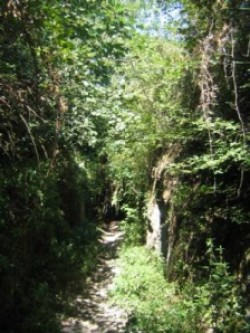
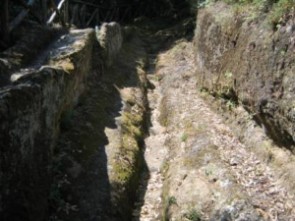


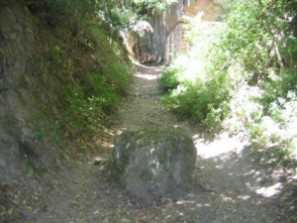




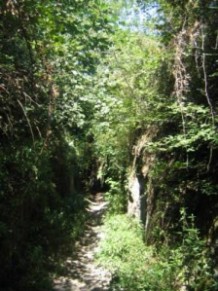




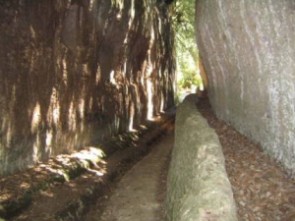










I want to to thank you for this very good read!! I absolutely enjoyed every little bit
of it. I have you book-marked to look at new stuff you post…
I am obliged, and grateful for your gratification. Thank you and hope to hear from you soon.
You could definitely see your expertise in the
work you write. The arena hopes for even more passionate
writers such as you who aren’t afraid to mention how they believe. All the time follow your heart.
I am reading this comment which dates back to 2013. I apologize for a 10 year delay… but your words reflect who I am and how I feel. Thank you with all my heart